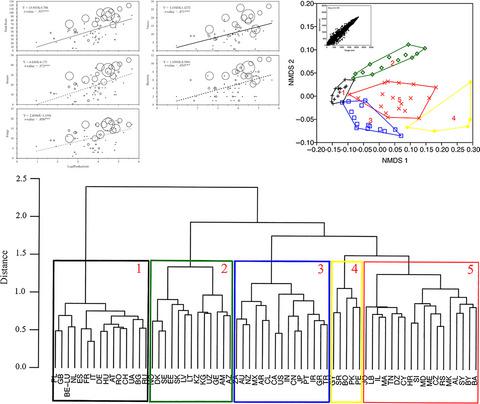当前位置:
X-MOL 学术
›
Food Energy Secur.
›
论文详情
Our official English website, www.x-mol.net, welcomes your
feedback! (Note: you will need to create a separate account there.)
Potential pest invasion risk posed by international sweet cherry trade
Food and Energy Security ( IF 4.0 ) Pub Date : 2020-10-21 , DOI: 10.1002/fes3.257 Guocai Lu 1, 2, 3 , Zihua Zhao 1 , Xubin Pan 2
Food and Energy Security ( IF 4.0 ) Pub Date : 2020-10-21 , DOI: 10.1002/fes3.257 Guocai Lu 1, 2, 3 , Zihua Zhao 1 , Xubin Pan 2
Affiliation

|
Trade has long been considered a potent pathway throughout the global spread of alien species, while related links between them remain poorly tested at a global scale. We therefore took sweet cherry, an emerging commercial fresh fruit, as a case study to explore the international trade patterns and its impact on global pest transfer. We used data on annual bilateral trade volume between countries from 1961 to 2016 (from FAOSTAT) and the current occurrence of sweet cherry pests per country (from CABI). The international sweet cherry trade was highly concentrated, especially in Europe with obvious intracontinental self‐selling. Cluster analysis and nonmetric multidimensional scaling divided the 66 producing countries into five groupings on pest compositional similarities, for which both the short geographical distance and trade pattern above‐mentioned might be responsible. Meanwhile, the country‐level pest species richness increased linearly with the log of production and proportionally over‐represented in specific countries with large import volumes. Overall, ongoing regional and global cooperation for most trading countries should be promoted to improve international regulations, and to maximize the benefits of pest records in terms of facilitating trade and reducing invasion risks of alien species. This is particularly essential for China, who has already granted sweet cherry market permits to 10 main producing countries. Of those, all but three were in the same grouping as China which poses the greatest risk for pest introduction and establishment.
更新日期:2020-10-21











































 京公网安备 11010802027423号
京公网安备 11010802027423号